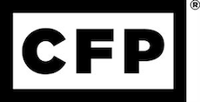Unpacking Tax-Advantaged Retirement Plan Savings for Self-Employed Individuals, Consultants, and 1099 Income Earners: The SEP IRA vs. Solo 401(k)
Retirement planning can feel daunting for self-employed individuals, freelancers, consultants, and 1099 earners. Without the benefit of an employer-sponsored plan, you’re tasked with finding and managing the best retirement options yourself. Fortunately, two highly effective solutions cater to your needs: the Simplified Employee Pension Individual Retirement Arrangement ("SEP IRA") and the Solo 400401(k). While both plans offer significant tax advantages and growth potential, they differ in terms of contribution limits, administrative requirements, and flexibility. Let’s delve into the key differences to help you determine which plan best aligns with your financial goals.
What Is a SEP IRA?
A SEP IRA is a retirement savings plan designed for self-employed individuals. It allows you to make pre-tax ("traditional") or Roth contributions to a retirement account for yourself. The simplicity of the SEP IRA makes it a popular choice, especially for those who value minimal administrative work.
Key Points of the SEP IRA:
- It's easy to set up. Just like opening a Traditional or Roth IRA at your custodian of choice (i.e. Fidelity, Schwab, Vanguard, etc.), except you set it up under whatever business name and structure you have (Sole Proprietorship, LLC, etc.)
- You can contribute up to $70,000 per year in 2025. However, you can only contribute a maximum of ~20% of your Net Business Profits to a SEP IRA, thus it'd take ~$365,000 of Net Business Profit to max out a SEP IRA in 2025 (you have to subtract off 50% of self-employment taxes from Net Business Profit before applying the 20%, which convolutes the calculation slightly).
- Contributions can be made pre-tax ("traditional") or Roth
- Contributions are deemed to be made by the employer ONLY. This is super important based on a 2024 Tax Ruling by the IRS (keep reading!). The IRS typically views self-employed individuals as 2 separate parties wearing 2 different hats - the "employee hat" and the "employer hat". This is why self-employment taxes exist (because you as a self-employed individual have to pay Social Security and Medicare taxes both as an employee and the employer - just like any other employer does!).
- It can potentially eliminate the opportunity for Backdoor Roth conversions. If you accumulate pre-tax SEP IRA dollars (or roll former pre-tax retirement assets into the SEP IRA) you'll run into the Aggregation Rule and won't get to convert all of your Backdoor Roth conversions 100% tax-free as you likely intended.
What Is a Solo 401(k)?
The Solo 401(k), also known as an Individual 401(k), is specifically designed for self-employed individuals and business owners with no employees (other than a spouse). This plan allows contributions from you as both "the employee" and "the employer". The beauty of this design is you can contribute a much higher percentage (typically) of your Net Business Profit to a Solo 401(k) relative to a SEP IRA. For example, in 2025, the required Net Business Profit to max out a SEP IRA is ~$365,000 whereas a Solo 401(k) only requires ~$247,000** of Net Business Profit (SEP IRA's and Solo 401(k)'s share the same contribution maximum at $70,000 per year for 2025 if you're under the Age of 50).
**If you take advantage of a special contribution type called After-Tax contributions, you can max out the $70,000 contribution limit to a Solo 401(k) with ~$75,800 of Net Business Profit. Watch this interactive YouTube video (also embedded below) to learn more about After-Tax contributions.
Key Features of the Solo 401(k):
- You can contribute up to $70,000 per year in 2025.
- It allows for contributions from you as both "the employer" and "the employee", enabling you the option to put a higher percentage of your business profits into a tax-advantaged account (if your cash-flow and tax-allocation across your Net Worth allow for it, of course), because as an Employee you can put in 100% of your Business Profit (up to $23,500 in 2025), then supplement with an Employer contribution which is similar to a SEP IRA (20% of Net Business Profit after accounting for Employee Solo 401(k) contribution and half of self-employment taxes). The combined Employee + Employer contribution amount is capped at the $70,000 per year limit, but it's quicker and easier to get there with a Solo 401(k).
- Additionally, under a 2024 Tax Ruling by the IRS, Employee contributions are now even more attractive (when doing Roth contributions) as compared to Employer contributions, as they preserve the ability to exclude 20% of Net Business Profits from taxation under the Section 199A Qualified Business Income Deduction
- Contributions can be made pre-tax ("traditional"), Roth, and if the Plan allows for it, you can do what's called After-Tax contributions (again, check out this interactive YouTube video [also embedded below] for more on this!)
- Solo 401k(s)'s are not subject to the Aggregation Rule, thus you can contribute pre-tax dollars to a Solo 401k and still preserve the ability to do annual backdoor Roth IRA conversions if your income is above the Roth IRA Contribution limits ($150k for Single Filers, $236k for Married Households in 2025).
Investment Options
Both the SEP IRA and Solo 401(k) typically offer a wide range of investment choices, including stocks, bonds, mutual funds, and ETFs. Depending on the custodian, Solo 401(k)'s can sometimes allow for alternative assets like real estate or private equity, without running into potential issues like Unrelated Business Income Tax or Unrelated Debt-Financed Income.
Administrative Requirements
SEP IRA's:
- Easy to set up and maintain, with minimal paperwork.
- No annual filing requirements with the IRS.
Solo 401(k):
- More administrative responsibilities, including Adopting a Plan and maintaining those Plan documents over time.
- If the assets within a Solo 401(k) plan exceed $250,000 at the end of the Plan's fiscal year (typically December 31), you must file Form 5500-EZ annually with the IRS. Failure to do so can result in some egregious penalties of $250 per day, but can be subsidized down to $500 per return when filing for relief under Revenue Procedure 2015-32.
Rollover and Portability
Both the SEP IRA and Solo 401(k) offer rollover options, allowing you to transfer funds from or to other qualified retirement accounts such as other 401(k)'s, certain 403(b)'s, Traditional IRA's, other SEP IRA's, etc. Keep in mind, however, that both SEP IRA's and Solo 401(k)'s are not governed by ERISA, which is a federal law that protects consumers in private sector retirement plans like employer-sponsored 401(k)'s. ERISA sets minimum standards for these plans, including participation, funding, and benefits. It also gives participants the right to sue for benefits and breaches of fiduciary duty. Additionally, ERISA is one of the most creditor-protection friendly laws, which may come into play in non-bankruptcy related cases where creditors are reaching for your assets.
Loan Provisions
One notable feature of the Solo 401(k) is the ability to take loans from the plan (while a SEP IRA cannot). This can be an attractive option for those who need access to liquidity. Typically loans up to the lesser of $50,000 or 50% of the account balance are permitted, if the Adoption Agreement for your Solo 401(k) Plan allows for it.
Tax Savings
As mentioned earlier, Solo 401(k)'s allow a self-employed individual to contribute as either/both the Employee and/or Employer, whereas with a SEP IRA, all contributions are deemed to have come from the Employer. Not only does this limit the percentage of Net Business Profit that can be put into a SEP, but because of a tax law called the Qualified Business Income Deduction (allows certain self-employed individuals to be able to EXCLUDE 20% of their business profit from tax), SEP IRA's can also be more tax-INefficient than a Solo 401(k) when the goal is to do Roth contributions.
Here's why: Based on how the IRS is requiring Employer contributions to be reported, Roth Employer contributions now reduce the 20% Qualified Business Income Deduction. Said another way, Roth employer contributions INCREASE the taxes you'll pay on your business profits today by 20% of whatever you put in as a Roth Employer contribution! With a SEP IRA, you have no flexibility around this if you're wanting to do Roth contributions because ALL contributions to a SEP are considered to be Employer contributions. Whereas with a Solo 401(k), you can do Employee Roth OR After-Tax contributions to side-step this tax ruling and still preserve more of your Qualified Business Income Deduction.
Now keep in mind this 20% Qualified Business Income Deduction does not apply if:
- Your business falls under a Specified Service Trade or Business ("SSTBs"). While not completely black and white, SSTB's are service-businesses where the principal asset of that business is the reputation or skill of 1 or more of its employees (typically fields like health, law, accounting, athletics, financial services, consulting, actuarial science, performing arts); AND
- Your taxable income is above ~$395k as a Married household, or ~$197k as a Single tax-filer in 2025 (you can get a partial deduction if your income is higher - it just gets phased out)
In other words, businesses that are not a SSTB will still qualify for the 20% Qualified Business Income Deduction even if their income exceeds the above thresholds. It's only if your business IS a SSTB do you have to worry about the income-limit phaseout.
Case Study #1 - Income Limits Are Above Qualified Business Income Threshold with Plans for Early Retirement (Age 55) - Prime Candidate for Pre-Tax Retirement Contributions
Eric (husband) is a self-employed consultant who earns $250k annually and Barbara (wife) is a corporate executive who earns $500k (household income of $750k). Based on their current financial trajectory, they are on track to "retire" (or rather, have Paid-Vocation be Optional) at Age 55. Given Eric works in a Specified Service Trade or Business, their household income is well above the Qualified Business Income deduction phase-out range, they are well into the highest federal/state tax brackets, and have plans to step away from paid-vocation well before Medicare or Social Security, they could be a prime candidate for deferring as much tax as possible via their retirement accounts (in other words, do as much pre-tax "traditional" retirement contributions so they get a tax deduction today, and will pay taxes upon withdrawal in retirement). Let's explore how a SEP IRA differs from a Solo 401(k) for Eric's consulting business:
SEP IRA:
The maximum contribution to a SEP IRA will be ~$47,240. All of that can be made on a pre-tax "traditional" basis, which will lower their tax bill in 2025 by $19,557 (marginal tax rate of 41.4% if a resident of Colorado), and $47,240 will grow tax-deferred until withdrawn in retirement (very likely at a much lower income tax rate than 41.4%).
Solo 401(k):
The maximum contribution to a Solo 401(k) will be $70,000, broken out as follows:
-A pre-tax "traditional" contribution of $23,500 will be made as an Employee contribution
-A pre-tax "traditional" contribution of $46,500 will be made as an Employer contribution
Not only do Eric and Barbara now have $70,000 that they got into a tax-advantaged account that will grow tax-deferred until withdrawal in retirement, but they also lowered their tax bill by $28,980 in 2025 ($9,423 more in tax-savings in 2025 when compared to the SEP IRA).
This couple was a prime candidate for pre-tax "traditional" contributions because given their early retirement projection of Age 55, they can then convert their pre-tax "traditional" retirement assets (whether they use the SEP IRA or Solo 401(k)) to a Roth IRA ("a Roth conversion") between the Ages of 55 and 65 and pay taxes at a much lower tax rate than they would ever pay while working. Pre-tax "traditional" contributions also made sense here because they were not impacting their Qualified Business Income 20% deduction, because they did not qualify for it in the first place as a result of their income being too high and Eric's business being a SSTB.
Case Study #2 - Income Limits Are Below Qualified Business Income Threshold, and Couple Has Tons of Brokerage Account Assets to Supplement Cash-Flow - Prime Candidate for After-Tax Retirement Contributions Available Only Through a Solo 401(k)
In the below video, I talk through how leveraging the After-Tax contribution-type through a Solo 401k can be a powerful way to preserve your Qualified Business Income deduction (i.e. pay less taxes today on business profits relative to Roth SEP IRA contributions or Roth Solo 401(k) Employer contributions), AND get a lot of money into a Roth account at the same time! Notice that this hypothetical couple has a lot of assets in a Brokerage account, so they can afford to supplement their monthly cash-flow if need be from the brokerage account, and target a large percentage of their income into a Roth tax-advantaged account, of which the appreciation, earnings, and withdrawals will all be 100% tax-free when withdrawn in retirement.
Conclusion
Both the SEP IRA and Solo 401(k) are excellent retirement options for self-employed individuals, consultants, or anybody with 1099 income and the ability to put away money for retirement. The best choice depends on your specific financial situation, goals, and preferences. By understanding the unique features of each plan, you can make an informed decision that best enables you to achieve your goals, and maximize the resources you've been entrusted with.
If you'd like to go into greater depth about how we partner with solopreneurs, consultants, or 1099 earners and integrate their tax-accumulation strategy for retirement along with every other moving piece of their financial picture, schedule a complimentary 60-minute Discovery Meeting below!







